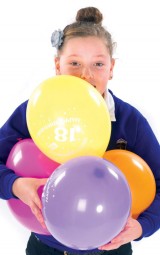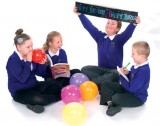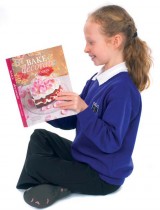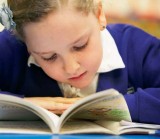Making assessment for learning central to your classroom practice might not take as long as you think, says David Dunn...
There are many, many books solely about Assessment for Learning (AfL). If you do a quick search on good ol’ Amazon you’ll find more than twenty devoted to AfL in schools. Many of these books are a worthwhile read and will give you lots of information on how Assessment for Learning is paramount to the progress of the children in your classroom. And, obviously, this is the case. But do you really have the time to go trawling through those books to brush-up on you AfL skills? If you do, fantastic – go for it! If you don’t, then carry on reading.
 What I shall be aiming to do, over the next few issues, is to give you the real, down-to-earth, nuts-and-bolts bits of AfL. The bits I know that work. We’ll look at differentiation, questioning, marking and peer assessment, starting with differentiation.
What I shall be aiming to do, over the next few issues, is to give you the real, down-to-earth, nuts-and-bolts bits of AfL. The bits I know that work. We’ll look at differentiation, questioning, marking and peer assessment, starting with differentiation.
AfL is quite a simple concept. It is knowing what the children in your class know, what they don’t know, and how you can make up the difference. This is at the heart of great teaching. Unfortunately, as I’m sure you’re aware, AfL won’t just miraculously start working. This is one area where you need to devote time; there’s no magic wand to wave to make everything brilliant from day one, I’m afraid!
There are ten guiding principles where AfL is concerned, as developed by the Assessment Reform Group (assessmentreform-group.org). These are as follows.
1. AfL should be part of effective planning of teaching and learning.
2. Assesment for Learning should focus on how students learn.
3. AfL should be recognised as central to classroom practice.
4. AfL should be regarded as a key professional skill for teachers.
5. AfL should be sensitive and constructive because any assessment has an emotional impact.
6. AfL should take account of the importance of learner motivation.
7. AfL should promote commitment to learning goals and a shared understanding of the criteria by which they are assessed.
8. Learners should receive constructive guidance about how to improve.
9. AfL develops learners’ capacity for selfassessment so that they can become reflective and self-managing.
10. AfL should recognise the full range of achievement of all learners.
That’s quite a list! Let’s have a look at what I consider to be the most important.
1. AfL should be part of effective planning of teaching and learning
Of course it should. In order to prepare effective lessons for the children in your class you need to know what they know already so you can properly plan for where they need to go next.
3. AfL should be recognised as central to classroom practice
It should be something that is taken for granted in your classroom. Don’t worry, it doesn’t take as long as you might think.
7. AfL should promote commitment to learning goals and a shared understanding of the criteria by which they are assessed
By sharing your learning intentions with the children, and by being explicit with them on what you will be looking for in order to know whether they’ve achieved it, you will have this one cracked. The biggest hurdle (and it is quite easy to jump) is ensuring the children know what they have to do in order to achieve the learning goals.
9. AfL develops learners’ capacity for selfassessment so that they can become reflective and self-managing
Sometimes it’s easy to get a little confused with self-assessment. It’s not about expecting children to be able to make the distinction between a level 3c and a level 3b! That’s your job as their teacher. Children can, however, assess their own learning and verbalise what they think they have learned and what they think they need to do in order to improve.
Differentiation is an area that many of us struggle to get right constantly. Just when we think we’ve got it cracked, we are brought back down to earth with a resounding bump. Alongside ‘planning’, ‘differentiation’ is one word that many teachers shy away from if at all possible. It is, no doubt, down to the perceived difficulty with differentiation and the thought of how much extra time it’s going to take sorting it all out on a Sunday evening. However, this doesn’t need to be the case. Differentiation does not mean planning 30 individual pieces of work or giving each child an allotted bit of the lesson just to themselves. Differentiation is…(drum roll): making each lesson as accessible as possible to every child in your class.
 There are many ways to differentiate when working in groups. Children can be grouped by gender, by friendship, by similar ability, by mixed ability, by personality and just at random. You can use specific groups for some subjects, or for all subjects. You can keep the groups the same, or vary them according to subject or task. Make sure you are clear in your own mind how your groups are set up and for what reason. Think about:
There are many ways to differentiate when working in groups. Children can be grouped by gender, by friendship, by similar ability, by mixed ability, by personality and just at random. You can use specific groups for some subjects, or for all subjects. You can keep the groups the same, or vary them according to subject or task. Make sure you are clear in your own mind how your groups are set up and for what reason. Think about:
• Why children are grouped in a particular way
• What advantages are there to grouping the children according to set criteria?
• Do the groups change, or do they always stay the same?
• Are the planned groups working effectively?
• How do you prepare for group work?
• How do you know if the groups are working effectively?
• Are the groups manageable?
There are many benefits to regularly changing the groupings in your class and, as an added bonus, you will find that any behavioural issues will lessen the more you move the children around. Not to mention the fact that you’ll be giving yourself some great opportunities for AfL. Let’s have a look at some grouping strategies.
A group of children work on a task, concept or any new learning and, once confident, share or ‘cascade’ that learning down to other children. This can work well for a more able or gifted and talented group.
Different groups work on the same task, or parts of the same task. Then, when they have collectedsome information, one person (the envoy) reports that information to another group. This works well in ability groups where each group could be working on a part of a text (looking at different grammatical areas, for example), which then could be brought together. The beauty of this is that all children will be working on the same text, so it’s not obvious which group is doing ‘harder’ work or which is the lower ability group.
 I love this activity. It’s great for differentiation and for classroom management. It also fits in really well as an AfL tool since you can set up and then evaluate specific learning quite easily. It takes a bit of explaining, but bear with me. It’s worth it!
I love this activity. It’s great for differentiation and for classroom management. It also fits in really well as an AfL tool since you can set up and then evaluate specific learning quite easily. It takes a bit of explaining, but bear with me. It’s worth it!
The idea is that a small group of children work together to produce a finished product that is made up of different parts. Each member of the group has responsibility for one of those parts and when they’re all put together you have the whole – hence the name jigsaw. Here’s a worked example.
• Split your children into groups of five or six (let’s assume we have a class of 24, so we’ll have four groups of six).
• Decide on a challenge the whole group has to complete – for example, they’re going to plan a party.
• Now divide the challenge into smaller tasks that can be split between the members of each group. E.g.
Task A: to compose an invite.
Task B: to work out a plan for the activities, working to a given time frame.
Task C: to work out the cost of the food, from a given shopping menu.
Task D: to write a letter to be sent along with the invite.
So let’s say, for the sake of argument, that tasks B and C are the most challenging, task D is an average challenge and task A is the least challenging. In each group, the children – or you – decide who does which task (you will have some tasks being done by two children).
Here’s where the differentiation comes in, and this really is ticking all the boxes. All the children doing task A leave their original groups join together to form a new group. So do the children doing the other tasks. You now have all the children doing task A together, all those doing task B together and so on. Every child has to do their own version of the task they have been given, but does so with the support of the other children doing the same task.
After a given length of time, everyone returns to their original group, taking their part of the ‘jigsaw’ with them. And then the jigsaw is complete! It’s a great activity as all children feel they have an equal responsibility and you get to focus on any areas of learning that need reinforcing (showing an immediate use of AfL) with the children while showing differentiation and personalised learning all at the same time.
There are many activities and uses of differentiation that don’t require endless amounts of planning and changing of worksheets.
Next time we’ll be looking at questioning and how you can fully integrate AfL into your everyday teaching.
Why clever questions lie at the heart of differentiation and AFL…
AFL Activity 1 – bouncing
 You can elicit understanding from children quite easily with this activity. You bounce answers around the room to build on children’s understanding and help to right misconceptions. For example:
You can elicit understanding from children quite easily with this activity. You bounce answers around the room to build on children’s understanding and help to right misconceptions. For example:
• ‘Paul, what do you think of Sue’s answer?’
• ‘Sue, can you develop Carl’s answer to include more detail?’
• ‘Carl, how might we combine all we’ve heard into a single answer?’
If you follow the questions in this order you automatically differentiate, from lower to higher ability. This can be used as a whole-class activity or as a group activity with each group given the question as a focus.
AFL Activity 2 – one minute summary
Give the children one minute towards the end of the lesson to write a summary of their learning. This gives you a good opportunity to check on understanding. You can also approach this from the opposite direction and give children one minute to write down anything they didn’t understand. Answers can be collected at the end of the lesson to inform your next session. Real AfL at work.
David Dunn is currently working as a primary school deputy head in the West Midlands. His new book, How to be an Outstanding Primary School Teacher, will be published in April 2011 by Continuum (continuumbooks.com).
Outstanding schools: RJ Mitchell Primary
Outstanding schools
Top tips for differentiation
Ace-Maths
Behaviour management: choosing the right words
Behaviour Management
